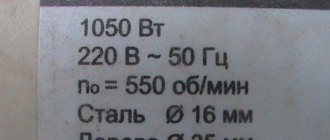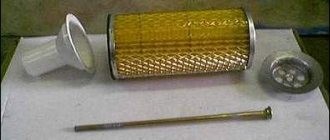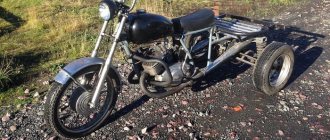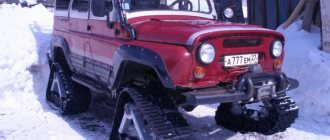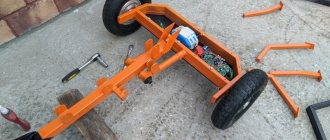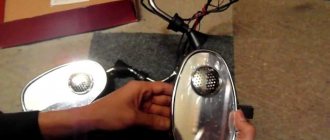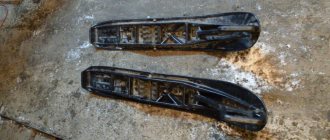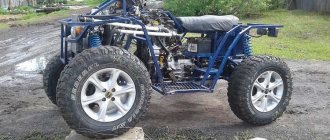Economical car enthusiasts, or those who are accustomed to performing all repair operations with their own hands, think about boring the cylinder block themselves. In this regard, most drivers immediately have a question: how advisable is it to carry out such a procedure, which cannot be called easy, in a garage box? After all, grinding a block without special equipment and certain skills is quite problematic. In addition, it is impossible to be completely sure of the accuracy of this procedure, but still many car owners undertake boring the cylinder block at home.
Note that experienced mechanics do not approve of such a procedure. Although it can be used as a last resort to restore the performance of motorcycle or moped engines. There are several ways to bore the cylinder block of an automobile power unit, each of which requires certain efforts and costs. Still, it is best to perform this procedure on a special boring machine, since in this case the risk of damaging the block is minimized. On a machine you can get an ideal cylinder bore (if it is done by a professional), but with manual execution such results are unlikely to be achieved.
What is it for?
The very concept of “block boring” implies the process of restoring the geometry of the power unit cylinders using special machines. The main prerequisite for block boring is a major overhaul of the engine, but now the procedure is mainly carried out to increase its power.
It is necessary to bore cylinders during a major overhaul because the pistons in them, under the influence of high temperatures, pressure and other constant loads, cause a violation of the geometric shape of the cylinders. To put it simply, due to constant friction and high loads, the cylinder, instead of a perfectly round shape, takes on the shape of an ellipse. Because of this, the piston can no longer fully adhere to its walls, resulting in a significant gap through which exhaust gases or fuel penetrate into the crankcase, and engine oil into the combustion chamber.
Naturally, because of all this, the power unit significantly loses its power, fuel and oil consumption increases. One of the sure signs indicating the need for engine boring is increased engine oil consumption. In addition, you should pay attention to the color of the exhaust gases. If bluish-blue smoke begins to appear from the exhaust pipe, a major overhaul of the power unit is not far off.
Just a few decades ago it was impossible to find good quality motor oil or coolant, which caused frequent overheating of engines. It even got to the point where it was necessary to overhaul the engine of a new car after 30-50 thousand kilometers. And units on trucks and special vehicles had to be restored much more often.
Today the situation has changed dramatically. Modern lubricants and coolants can significantly increase the service life of a car engine. Now the average mileage before major repairs is approximately 200-250 thousand km, and not every motorist drives even 12-15 thousand km in a year. It turns out that this resource of the power unit should be enough for more than 15 years of operation. Not every vehicle can withstand that much.
Block boring has recently been extremely rarely used as a necessary repair measure. This procedure is mainly used for tuning to increase engine volume and power. But, in the second case, boring is carried out only when the condition of the cylinder walls allows it to be performed. In this case, it is necessary to install pistons with a larger diameter. Also, to ensure correct operation of the power unit, a larger amount of fuel mixture will be required, since its volume will increase, and accordingly, the power will increase.
Water container
Now you need to take another paint can, but of a smaller size. A hole with a diameter of 1 cm is drilled in the center of its lid. Two more holes are made on the side of the jar - one almost at the bottom, the second above, near the lid itself.
Take two crusts, in the center of which a hole is made with the diameter of a copper tube. 25 cm of plastic pipe is inserted into one cork, 10 cm into the other, so that their edge barely peeks out from the plugs. A korok with a long tube is inserted into the lower hole of a small jar, and a shorter tube into the upper hole. We place the smaller can on the larger can of paint so that the hole in the bottom is on the opposite side from the ventilation passages of the large can.
Which motors can be sharpened and which cannot?
As you know, the cylinder block can be made of cast iron or aluminum. The first option, despite some disadvantages, which include high mass and low heat dissipation, has good strength and is ideal for turning. An aluminum block, on the contrary, is much lighter and more efficient at removing heat.
However, the walls of its cylinders are coated with a special wear-resistant compound, which is why it is not recommended to grind them. This procedure will simply remove the coating from the walls, causing the cylinders to lose their strength and not last long.
Process technology
You can learn further about how to carry out this process of boring the head with your own hands at home. We must warn you that the procedure is quite painstaking and time-consuming, this must be taken into account. To make a head boring with your own hands, there are several ways, we will look at each of them in detail with photos and videos.
Using a drill
- You will need a regular construction drill. It is necessary that it is powerful enough and can operate at low speeds. You will also need an old (worn out) piston in the sleeve. In addition, you need to prepare a cylinder pin and several pieces of sandpaper of different grits.
- Take the old piston that you prepared, and in the very center you need to drill a hole for the pin on which to screw the nut. The pin should be installed so that it points upward, and the fastener itself should be tightened as tightly as possible.
- Next, you should cut a cut on the piston (use a hacksaw), into which sandpaper should then be inserted. The sandpaper is wrapped around the entire structure. Then the resulting structure must be inserted into the socket of the drill, and must be screwed in as tightly as possible.
- The cylinder should be tightened as much as possible, and the nozzle itself should pass through the sleeve.
- Now, in fact, we begin the process of boring the channels. You need to turn on the drill at low speed. Move the drill up and down, making sure that the sandpaper is always in contact with the inside of the sleeve. To begin with, it is recommended to use a coarser sandpaper until the new piston enters the channel at least halfway (preferably 60-65%). After this, insert fine sandpaper and bore the channel to the required size.
- As a result, the surface of the channel must be sanded with a zero polish. You can use oil to make grinding easier. For more details about boring, watch the video.
The request returned an empty result.
Using a wooden mandrel
Another method by which you can bore the head at home with your own hands is presented below.
- You will need a special wooden mandrel to complete the work, as can be seen in the photo and video. To do this, you can contact a specialist to make it, but you can try to build such a block yourself. Its size will depend on how much you need to bore. For example, if the cylinder should be bored to 76 mm, then the diameter of the bar should be 74 mm. As for its length, it should not exceed 20 cm.
- Next, you should drill a hole for the knob directly in the mandrel. Then, it is necessary to cut a cut lengthwise into which the sandpaper will be inserted to carry out the boring. How deep should the cut be? It is advisable that it does not exceed 1 cm. By the way, your sandpaper should be of both coarse and fine grain.
- Now, with your own hands, you should insert sandpaper into the cut on the wooden mandrel, and wrap the mandrel itself with sandpaper. To begin, use coarse sandpaper. The paper should be lubricated with lubricant, after which you can begin the process of boring with your own hands at home. The mandrel must be rotated inside the channel until it moves freely. When the mandrel rotates freely, place a piece of cardboard under the sandpaper.
Pros and cons of boring
Among the advantages are the following:
- Power increase
- Increased service life
- Reduced oil consumption
- Increase compression
- Improving the dynamics of the unit
The disadvantages include:
- Reduced engine efficiency
- Reducing the size of the cylinder walls, which causes the engine to heat up faster
- Violation of the factory characteristics of the power unit, which may negatively affect the passage of maintenance
Making a “cutter”
In this operation we will need: a birch log, calipers, a marker, a chisel, a saw, a cylinder (the one we are going to sharpen), a piston (new and old), a rasp (you can use a file), a drill, a long bolt with a nut or a hairpin with two nuts , sandpaper sheets “10”, “6”, “5” and “0” (on a fabric basis - not suitable on paper). There are a few caveats - the stud or bolt must be at least 8mm in diameter. The best solution would be 12mm. Sandpaper is selected independently, depending on the type of boring. It is advisable to go through the “rough process” and bring it “to clean water”, and not to drive the rough one until you are blue in the face. Then fix the finishing one, and buy and select a new piston.
Let's start - measure the sleeve with a caliper:
Let's take an allowance of 10mm and measure it on the already trimmed log:
Let's outline approximately where we have “more meat”, and set some simple markings there and drill:
Immediately take a larger chisel and chop off the excess “meat”. Shape it into a cylinder.
But the shape of a cylinder will not work, it will turn out something like an oval:
The next step is to tighten the resulting cylinder onto the stud/bolt. Tighten until your teeth creak. When inserted into the drill, tighten until your teeth creak - it will unwind with a bang. If you tighten it harder, it won’t run away. Now secure the drill, make a stop for the chisel, and unwind the cylinder by pressing the gas on the drill. Take technology breaks more often. During breaks, tighten all nuts. If it comes loose, the results could be disastrous.
By substituting a chisel (smoothly substituting a chisel!) we ensure that we first get an oval:
Then the shape will remind us of a cylindrical object:
Later you will get a natural, perfect cylinder. I think there is no need to explain that the fine-tuning was no longer carried out with a chisel, but with a rasp, and later even with a file.
You should end up with a long wooden piston for the cylinder. Only well weakened. Somewhere by 0.3-0.6 mm.
Something like that:
This is an example of relaxation.
Next, we will make a technological cut in a wooden blank:
And you need to make a “latch” for it, that is, a latch. So that the sandpaper does not run away from us somewhere far away. Here I honestly admit that I stepped in the wrong place.
I made it wooden:
And it looked like this:
But when I started refilling, I realized that it didn’t hold well. The answer did not take long to arrive - a 3mm welding electrode worked perfectly as a clamp.
Make a fastener for the drill - it tends to run away from you!
Now let's see how we will have a working area:
Well, we have made our workplace. We can start taking measurements.
Methods for boring a block yourself
You can perform this procedure at home in two ways, which are practically no different from each other. We warn you in advance that the process of self-boring is quite labor-intensive, and after it is completed, an ideal result cannot be guaranteed.
To perform the first boring method, you will need a high-speed electric drill, an old piston and a set of sandpaper of various grain sizes on a moisture-resistant fabric base. The process itself can be described as follows:
- in the upper central part of the piston it is necessary to drill a hole for the pin, then insert and tighten it tightly;
- Using a hacksaw for metal, you need to make a cut in the side of the piston, insert the edge of coarse sandpaper into it, wrap it around the piston and fix it in the same cut;
- Boring should begin at minimum speed, gradually adding it. When boring, the drill should be moved up and down in smooth movements;
- when the piston used for boring will freely penetrate 2/3 of the cylinder, change the sandpaper to finer sandpaper and sharpen it with it;
- after all manipulations, final grinding should be done with a “zero”;
Another way is to use a wooden blank that will imitate a piston. To do this, it is necessary to make an appropriate mandrel. Moreover, in diameter it should be 2-3 mm smaller than the piston, and 100-200 mm longer than the cylinder liner. It is also necessary to make a side cut in the workpiece to fix the sandpaper, and drill a hole for the knob in the upper part in the center. The process is carried out in a similar way to the first method. The only thing is that it is more labor-intensive because it is done manually. During the grooving process, it is necessary to periodically lubricate the surface of the cylinder being machined.
The uniformity of boring is controlled visually, or using a pre-made template, for example, from the same wood.
As a conclusion, it is worth saying that this is, in principle, a good way to increase engine power; whether you use it or not is entirely your choice. It is advisable to turn to professionals to carry out this procedure, as everything would be of much better quality.
Measurements
We buy a new piston, one repair size larger (usually 1 unit) and see how and where it fits (if it doesn’t fit, then it’s still ahead).
We push in different directions to understand where and what is in the way. If the cylinder worked in risky modes, it means it has a huge output. Mine worked with too early ignition, a slightly lean mixture, which gave quite high revolutions.
The cylinder mirror is excellent, but here's the breakdown:
What you see on the cylinder liner is dirt. That is, a lubricant that once was. After removing it, I preserved it for some reason. I don’t know why...
Having measured the piston (even if it goes inside, it jams right in the middle), I realized that it needs to sharpen just a little. If the piston doesn’t fit at all, then yes, let’s see how much grinding needs to be done. Usually in such situations they sharpen 0.1-0.15 mm. I sharpened 0.01-0.07. It is advisable to choose a piston in the store so that it barely enters. Then boring will turn out better because you can pick up the piston even larger and bore it again. In the pictures there is simply a worn-out cylinder that seems to have served its useful life during this repair.
You've been waiting for this for so long, let's start the process.
